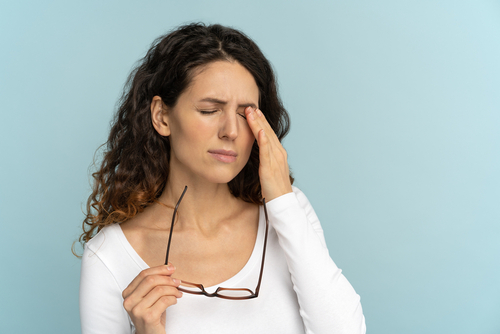What Should I Do If I Develop a Corneal Ulcer?
A corneal ulcer is painful and can cause permanent vision damage. So how do you know if you have one, and what should you do to protect your sight?
Keep reading to learn more information about what to do if you develop a corneal ulcer!
What Is the Cornea?
The cornea is the clear tissue that acts as a window at the front of the eye to allow light to enter. In order to experience clear vision, your cornea must remain clear and evenly shaped.
Any damage to the cornea, including injury, infection, and certain eye conditions, can permanently affect your sight.
What Is a Corneal Ulcer?
A corneal ulcer, also known as keratitis, occurs when there’s a loss of tissue in the cornea, often associated with irritation or inflammation. Though it’s usually caused by an eye infection, it can also develop from other eye conditions, such as dry eye syndrome.
What Are the Symptoms of a Corneal Ulcer?
If you have any of the following symptoms, you may have a corneal ulcer:
- Eye redness and irritation
- Severe eye pain and soreness
- Tearing or watery eyes
- Grittiness or sensation of something in the eye
- Eye discharge, such as mucus or pus
- Blurry vision
- Light sensitivity
- Swollen eyelids
- White spot on the cornea
Don’t let symptoms go untreated. Make an appointment as soon as possible.
What Are the Risks of a Corneal Ulcer?
Certain conditions and situations can increase your risk of developing a corneal ulcer. These include:
- Improper care and hygiene when wearing contact lenses
- Cold sores, chicken pox, or shingles
- Steroid eye drop usage
- Dry eye syndrome
- Infections or disorders of the eyelid
- Corneal injuries
- Corneal burns from chemical exposure
- Corneal abrasions such as scratches, scrapes, and cuts
Eye infections can also lead to corneal ulcers. These include bacterial, viral, fungal, and parasitic infections.
How Are Corneal Ulcers Diagnosed and Treated?
An eye exam is the best way to determine if you have a corneal ulcer. Your eye doctor will give you eye drops containing a special dye called fluorescein which will highlight damaged areas of the cornea.
These drops will also help your eye doctor see any areas of thinning on the cornea or inflammation. All this is visible using a slit lamp, a special microscope that provides an extreme closeup view of your cornea.
In the case of an infection, your eye doctor may take a tiny tissue sample to help with diagnosis. To treat your corneal ulcer, you may be prescribed either antibiotic, antifungal, or antiviral eye drops depending on the type of infection.
Sometimes they are given in tablet form which you’ll take orally. In some cases, eye doctors recommend injections near the eye to help control the infection.
Your eye doctor may also prescribe anti-inflammatory eye drops to reduce swelling and prevent corneal scarring.
How to Reduce Your Risk
Protecting your eyes is the number one best way to prevent a corneal ulcer from occurring. If you’re a contact lens wearer, practice good contact lens hygiene and buy your contacts from a reputable source.
It’s also important to only use fresh and sterile solutions, so don’t use anything past its expiration date. Never wear cosmetic contact lenses, as they are a frequent cause of corneal damage and abrasion.
If you work in environments with airborne particles or the possibility of projectiles, always wear protective eyewear. Proper eyewear that prevents anything from coming into contact with your eyes can ensure that you’ll keep your sight for years to come.
Are you experiencing symptoms of a corneal ulcer? Schedule an appointment at Mid Ohio Eye in Columbus, OH, today!










